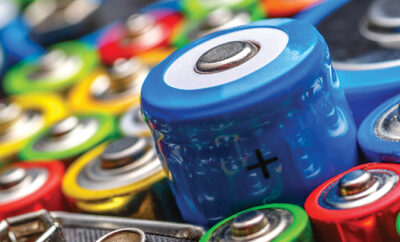
Water Conservation: More Than Low-Flush Toilets
The U.S. Environmental Protection Agency estimates that the average American uses 88 gallons of water per day. Nationwide, nearly one-third of this water is used for landscape irrigation. Billions of gallons of clean, fresh water are lost daily because up to 50 percent of irrigation water is wasted to evaporation, wind or runoff caused by poor irrigation systems. You may be wondering, “What can I do to reduce my water usage and waste?”
Ecologists believe that simple water conservation devices such as rainwater tanks and low-flush toilets are more viable options that are simpler to install and have shorter payback periods than greywater systems. Studies show that, on a domestic scale, recycling greywater is not energy efficient. For the energy conscious, it is better to concentrate on water efficiency and reducing the volume of hot water used in the home.
Still, people are beginning to learn of the benefits of using treated greywater for laundry, toilet flushing and irrigation of plants, especially in arid areas where fresh water is at a premium during certain periods of the year. Some studies have estimated that a little over half of the household water could be recycled, saving hundreds of gallons of water per day. Greywater contains traces of dirt, food, grease and hair, which are nutrients to plants because of the phosphorus and nitrogen that make up their structure.
By using greywater, homeowners reduce their household water bills and reduce the demand on the community’s fresh water supply. Properly treated wastewater reduces the amount of water entering sewage systems or sewers. In doing so, the homeowner is benefiting from lower sewage costs in addition to benefiting the community, which has less sewage to process.
Greywater, or sullage, is all wastewater generated in households or office buildings except sewage. The main difference between greywater and blackwater, or sewage, is the organic content. Sewage has much more organic content than greywater. Some people even call waste water from kitchens and dishwashers dark greywater because of the higher amount of chemicals, organic matter and fat particles than the greywater coming from laundry, handwashing, showering and bathing. Any water that is in contact with feces, for example, from toilets or washing diapers, must be treated as sewage.
Using a diversion device is the simplest way to recycle greywater. This device carries the greywater from the bathroom or washing machine to the garden without treatment. Many of the greywater systems rely on plants and microorganisms to treat the water naturally so that it can be re-used. There are different levels of treatment. Some treatments make the water safe for edible fruits and plants; others do not. You will need to do your own research and consult an expert to be sure the system you are considering meets your needs safely.
Laundry-to-landscape systems are easily self-installed without extra plumbing work unless your house is downhill of the garden. If you should require professional help, expect to add around another $500 to $1,500 in labor.
The Environment Agency of the United Kingdom states that greywater systems have lengthy payback periods that vary depending on the type of system installed and local water costs. Obviously, it is cheaper and easier to install greywater systems during construction or major remodeling than trying to modernize an older home.
When working with greywater, you don’t want to store the water for more than 24 hours since the nutrients will begin to break down and create bad odors. Also, you need to maximize the amount of water that soaks into the ground, preventing this water from coming in contact with humans and animals. There is always the possibility of contamination; hence, untreated greywater should be used only for subterranean garden irrigation through a system of pipes buried at least 40 inches below the surface. Greywater that pools will be a possible breeding ground for mosquitoes; you need to be sure all the water percolates into the ground.
Some people wonder if their household will produce too much greywater for their landscaping use. The simple answer is no: it’s amazing how much water your soil can absorb. Yet in humid and wet areas, homeowners can construct wetlands to help absorb storm water and wastewater. Backyard ponds will help treat the water through natural means and at the same time create a backyard wildlife habitat with attractive plants for a serene, outdoor haven.
Greywater systems should be simple and avoid pumps and filters that need upkeep when possible. Still, those who live in arid areas or frigid climates may need professionals to help with the design and installation of their system. Rest assured; there are manufactured systems for nearly every budget or residential application. You probably won’t recover the cost of your system but you will be doing your bit to save the planet! ■
Sources: sustainable.com.au, choice.com.au, elemental.green and waterwisesystems.com.







